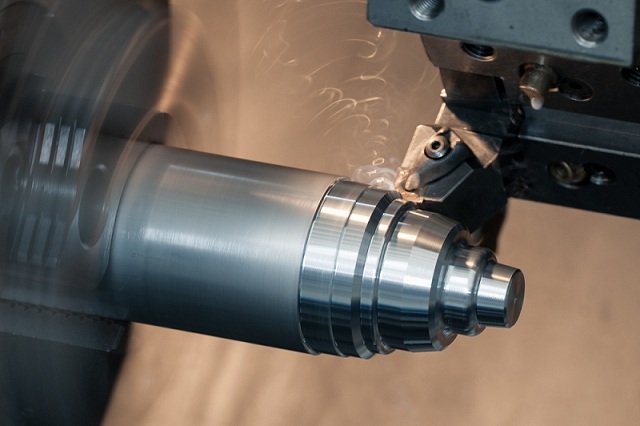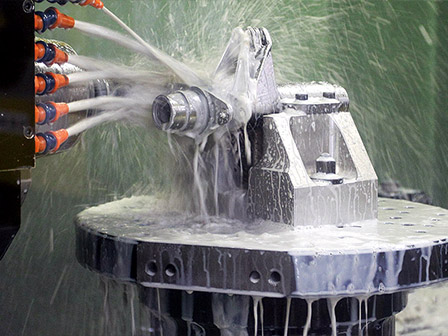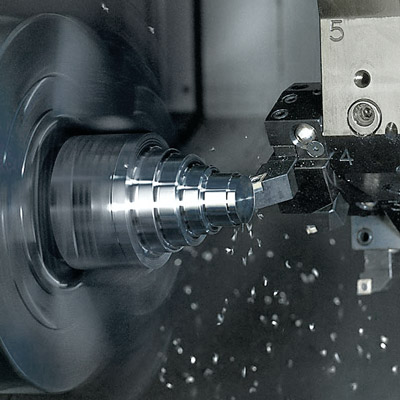6 points for safe operation of machinery
1. The main injuries caused by mechanical accidents are as follows (pay attention to safe operation):
1) Damage caused by mechanical equipment parts and components when rotating. For example, the gears, support pulleys, pulleys, chucks, shafts, smooth rods, lead screws, and supply shafts in machinery and equipment are all rotating. The main forms of personal injury caused by rotating motion are twisting and object strike injuries.
2) Damage caused by linear motion of mechanical equipment parts and components. For example, forging hammers, punches, and sheet cutting. The pressing parts of the machine, the head of the bullhead planer, the bed surface of the gantry press, the bridge crane, the trolley, and the lifting mechanism, etc., all move in a straight line. The main injury accidents caused by the parts and components used for linear transportation are crushing, crushing and crushing.
3) Damage caused by the tool. For example, turning tools on lathes, milling cutters on milling machines, drill bits on drilling machines, grinding wheels on grinders, saw blades on sawing machines, etc. are all tools used for machining parts. The main injuries caused by the tool when processing parts are burns, stabs, and cuts.
4) Damage caused by processed parts. Mechanical equipment may cause personal injury in the process of processing parts. This kind of injury accidents mainly include: ① The machined parts are not firmly fixed and are thrown out to injure people. For example, when the lathe chuck is not firmly clamped, the workpiece will be thrown out and hurt people when rotating. ②The processed parts may cause injuries during the lifting, loading and unloading process.
5) Damage caused by electrical system. Most of the mechanical equipment used in the factory is powered by electricity, so each mechanical equipment has its own electrical system. It mainly includes motors, distribution boxes, switches, buttons, local lighting, and zero (ground) and feeder wires. The main damage to people from electrical systems is electric shock.
6) Injuries caused by hand tools.
7), other injuries. In addition to mechanical equipment that can cause the above-mentioned various injuries, it may also cause other injuries. For example, some mechanical equipment is accompanied by strong light and high temperature when in use, and some emit chemical energy, radiation energy, and dust-toxic hazardous substances, etc., which may cause harm to the human body.

2. What are the basic safety requirements for the safe operation of mechanical equipment?
The basic safety requirements of machinery and equipment are mainly:
1) The layout of mechanical equipment should be reasonable, and it should be convenient for operators to load and unload workpieces, process observation and remove debris; at the same time, it should also be convenient for maintenance personnel to inspect and repair.
2) The strength and rigidity of the parts and components of the mechanical equipment should meet the safety requirements, and the installation should be firm without frequent failures.
3) According to relevant safety requirements, mechanical equipment must be equipped with reasonable, reliable safety devices that do not affect operation. E.g:
(1) Safety protection devices such as protective covers, protective baffles, and protective railings should be installed for the rotating parts and components to prevent twisting.
(2) For parts and components that can cause dangerous accidents such as overpressure, overload, overtemperature, overtime, overtravel, etc., safety devices should be installed, such as overload limiter, stroke limiter, safety valve, temperature relay, time Breakers, etc., so that when a dangerous situation occurs, due to the role of the safety device to eliminate the danger and prevent the occurrence of accidents.
(3) When certain actions need to warn or remind people, signal devices or warning signs should be installed. Sound signals such as electric bells, horns, and buzzers, as well as various light signals, various warning signs, etc. belong to this type of safety device.
(4) For some parts and components whose order of action cannot be reversed, interlocking devices should be installed. That is, a certain action must be performed after the previous action is completed, otherwise it will not be possible. This ensures that accidents will not occur due to the wrong sequence of actions.
4) The electrical installations of mechanical equipment must meet electrical safety requirements, mainly as follows:
(1) The power supply wire must be installed correctly, and there must not be any damage or exposed copper.
(2) The motor insulation should be good, and its wiring board should be protected by a cover to prevent direct contact.
(3) Switches, buttons, etc. should be intact, and their live parts should not be exposed.
(4) There should be a good grounding or zero connection device, and the connected wire should be firm, and there should be no disconnection.
(5) The local lighting lamp should use 36V voltage, and it is prohibited to use 110V or 220V voltage.
5) The joysticks and foot switches of mechanical equipment should meet the following requirements:
(1) Important handles should have reliable positioning and locking devices. The coaxial handle should have obvious difference in length.
(2) The handwheel can be disengaged from the shaft during maneuvering to prevent injury to personnel when rotating with the shaft.
(3) The foot switch should have a protective cover or be hidden in the recessed part of the bed to prevent the fallen parts and parts from falling on the switch and starting the mechanical equipment and hurting people.
(4) The work site of the mechanical equipment should have a good environment, that is, the illumination should be suitable, the humidity and temperature should be moderate, the noise and vibration should be small, and the parts, tools and fixtures should be placed neatly. Because this can encourage the operator to feel comfortable and concentrate on work.
(5) Each piece of machinery and equipment should work out safe operating procedures and inspection, lubrication, and maintenance systems based on its performance and operating sequence, so that the operator can follow it.
3. What are the common safety operation protection devices in the machining workshop? What are the main functions?
Common protective devices in machining workshops include protective covers, protective baffles, protective railings and protective nets. Protective devices should be installed on the transmission belts of mechanical equipment, couplings, rotating shafts, pulleys, flywheels, grinding wheels, and chainsaws where the exposed gear is close to the ground. There must be safety devices for the spinning parts of presses, roller compactors, calenders, electric planers, shears and other pressure machines. The protective cover is used to isolate the exposed rotating parts, such as pulleys, gears, sprockets, rotating shafts, etc. The protective baffle and the protective net have two forms of fixed and movable, which play the role of isolating and shielding metal chips from splashing. Protective railings are used to prevent people from falling or delimit safe areas. Generally speaking, the forms of protective devices mainly include fixed protective devices, interlocking protective devices and automatic protective devices.

4. What are the safety management regulations for safety operators of machinery and equipment?
To ensure that machinery and equipment do not have industrial accidents, not only the machinery and equipment itself must meet the safety requirements, but more importantly, the operators are required to strictly abide by the safety operation regulations. Of course, the safety operating procedures of machinery and equipment vary in content due to their types, but the basic safety rules are:
1) Wear personal protective equipment properly. What should be worn must be worn, and what should not be worn must not be worn. For example, female workers are required to wear protective caps during machining. If they do not wear them, they may twist their hair in. At the same time, it is required not to wear gloves. If they are worn, the rotating part of the machine may twist the gloves in and cause the hands to be twisted.
2). Safety inspection of mechanical equipment should be carried out before operation, and the vehicle should be run empty, and then it can be put into operation after confirming that it is normal.
3). Safety inspections of machinery and equipment should be carried out in accordance with regulations during operation. Especially to see if the fastened objects are loose due to vibration, so that they can be fastened again.
4) It is strictly forbidden to run the equipment with faults, and do not make do with it to prevent accidents.
5) The mechanical safety device must be used correctly according to regulations, and it must not be dismantled and left unused.
6). The cutting tools, jigs and fixtures and processed parts used by the mechanical equipment must be installed firmly and not loose.
7) It is strictly forbidden to adjust by hand when the mechanical equipment is in operation; it is also forbidden to measure parts by hand, or lubricate or clean up debris. If it must be done, the mechanical equipment should be shut down first.
8) When the mechanical equipment is running, the operator shall not leave the work post to prevent no one to deal with the problem.
9). After the work is over, the switch should be turned off, the tool and workpiece should be withdrawn from the working position, and the work site should be cleaned up, parts, jigs, etc. should be placed neatly, and the mechanical equipment should be cleaned.
5. How to safely operate the metal cold processing workshop to prevent industrial accidents?
There are many kinds of machine tools in the metal cold processing workshop. As long as the workplace is properly arranged, the necessary protective devices and safety devices are set up, and the safety operation regulations are strictly followed, industrial accidents can be effectively prevented.
Machine layout requirements:
1). Do not throw parts or chips out and hurt people.
2) The operator is not dazzled by direct sunlight.
3) It is convenient to transport finished products, semi-finished products and clean metal chips.
4). Safety passages should be set up in the workshop to enable people and vehicles to travel unimpeded.
Protective device requirements:
1). Protective cover: isolate exposed rotating parts.
2). Protective railings. For machine tools that are easy to injure people during operation, as well as machine tools that are not operated on the ground, protective railings with a height of not less than 1m should be installed.
3). Protective baffle: prevent wear debris, cutting chips and coolant splashing.
Safety device requirements:
1) Overload safety device: automatically disconnect or stop when overloaded.
2) Travel safety device: the moving parts can automatically stop or return to the predetermined position.
3). Sequential action interlocking device: Before one action is completed, the next action cannot be performed.
4) Accident interlocking device: In the event of a sudden power failure, the compensation mechanism can act immediately or the machine tool stops.
5) Braking device: Avoid unloading the workpiece while the machine is rotating; in case of sudden accident, it can stop the machine in time.

6. What safety matters should be paid attention to in safe operation of lathe workers?
The safety items that a lathe worker should pay attention to are:
1) Wear tight-fitting protective clothing, do not open cuffs; wear protective caps for long hair; do not wear gloves during operation.
2) The loading and unloading of the chuck on the main shaft of the machine tool must be carried out after the machine stops. The power of the motor cannot be used to take the chuck.
3). It is better to use a protective cover for the protruding parts of the chuck, dial, and heart clip to clamp the workpiece, so as not to twist the clothes or other parts of the body. If there is no protective cover, pay attention to leave during operation and do not rely too much. near.
4). When clamping the workpiece with the center, pay attention that the center and the center hole L should be exactly the same. Do not use the damaged or skewed center. Clean the center and the center hole before use, and the rear tailstock center should be firmly fixed.
5) When turning a slender workpiece, a center frame or a follower should be used to ensure safety, and the part of the lathe should be marked.
6) When turning workpieces with irregular shapes, balance weights should be installed, and try to balance before cutting.
7). The tool clamping must be firm, the protruding part of the tool head should not exceed 1.5 times the height of the tool body, the shape and size of the gasket under the knife should be consistent with the shape and size of the tool body, and the number of gaskets should be as few as possible. level.
8) Use hooks to remove the strip-shaped chips and spiral-shaped long chips that are cut off in time, and do not use hand.
9). In order to prevent crushing and cutting chips from hurting people, a transparent baffle should be installed in a suitable position.
10) Except that the lathe is equipped with measuring tools for automatic measurement during operation, the workpiece should be stopped and the tool holder should be moved to a safe position.
11). When sanding the surface of the workpiece with emery cloth, move the tool to a safe position and be careful not to let your hands and clothes touch the surface of the workpiece.
12). When grinding the inner hole, do not use your fingers to support the emery cloth, use wooden sticks instead, and the speed should not be too fast.
13). It is forbidden to put tools, fixtures or workpieces on the lathe bed and the spindle gearbox.


